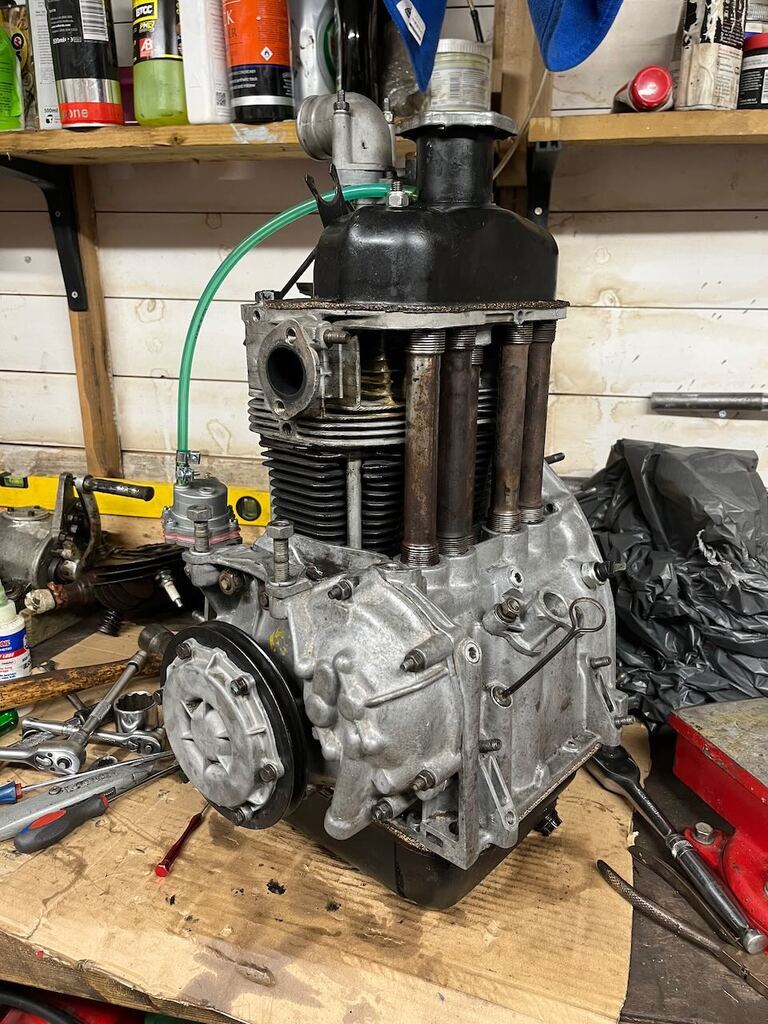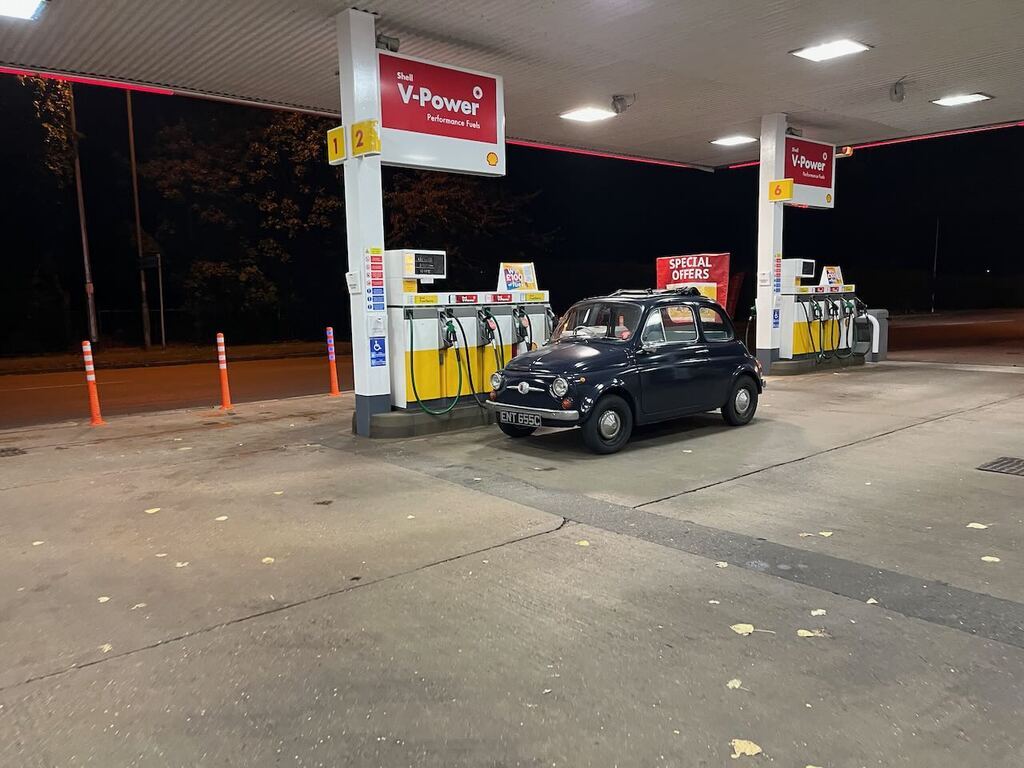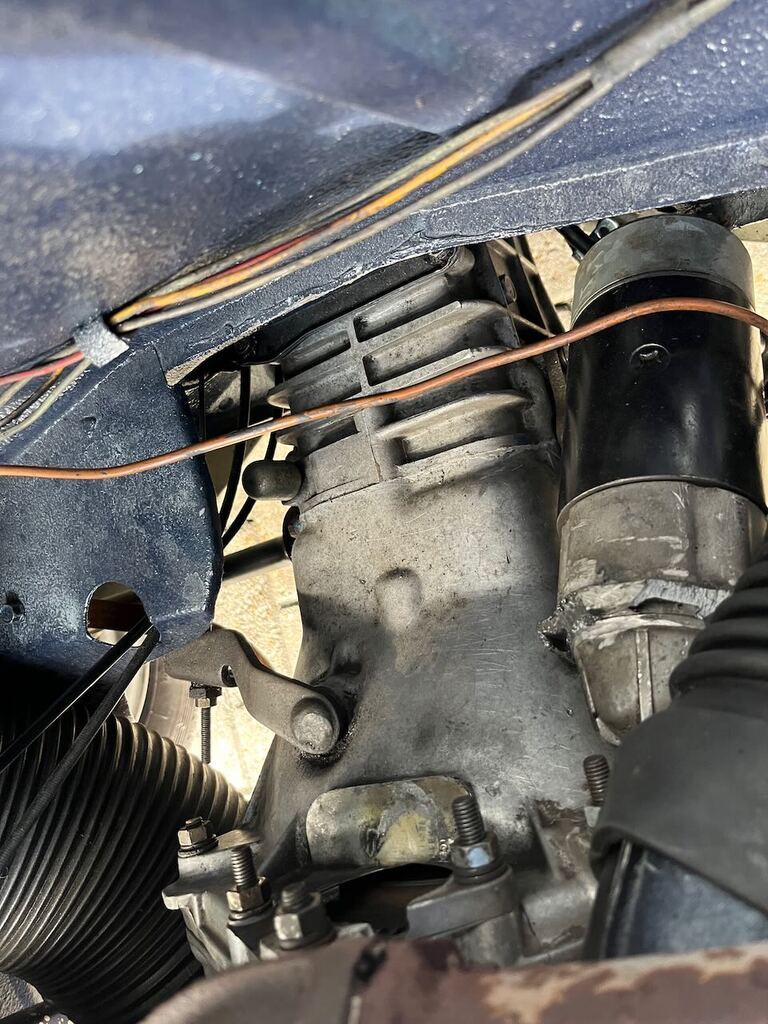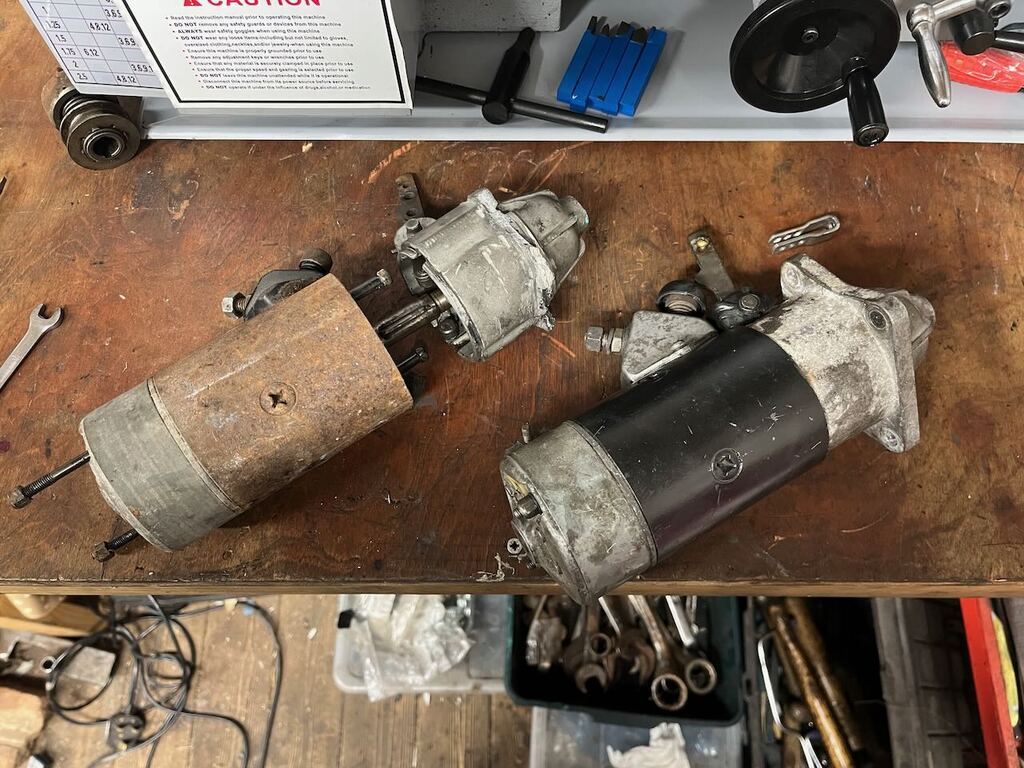Right, time for the always interesting but rarely enjoyable engine autopsy! haha
With the tinware and other ancillaries removed from the engine, the first thing I noticed if that my pushrod tubes are looking nice and dry and haven't leaked any oil, but interestingly there is some leakage coming down from the head studs.

I wonder if the washer under the nut for the head studs be a special sealing washer? Or could I pop a bit of silicone under the washer when I reassemble the engine? Any other thoughts air cooled people?
Anyway, moving on, from here it was the work of just a few minutes to pop the engine on its side, pull the sump and get at the crank.

The front main bearing, as expect, is totalled. Lots of deep scratches on the main bearing surface, both the front and rear thrust surfaces, obvious play on the crank. Somehow I managed to not get a picture!
The front main bearing journal on the crank is also fairly scored, I'm sure it could be ground undersize as its not that deep, but can definitely feel it with my finger nail, so this crank wont be going back in an engine without work.
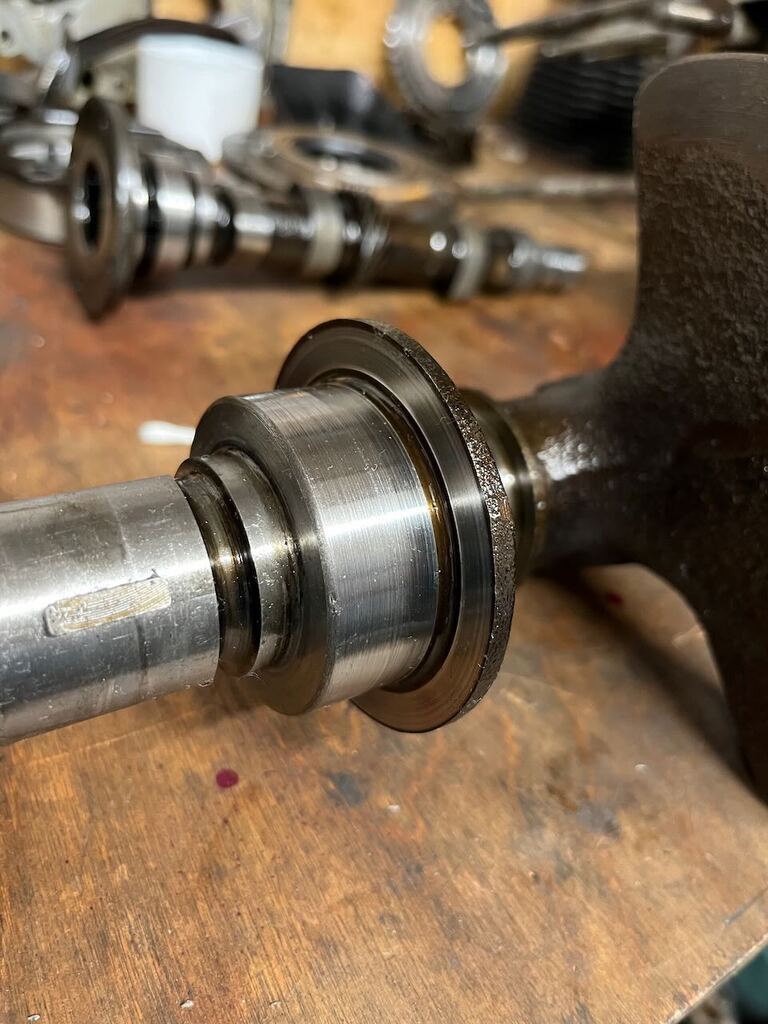
The rod journals have some light scoring, nothing like as bad as the front main journal, but not as clean as when I put the engine together.
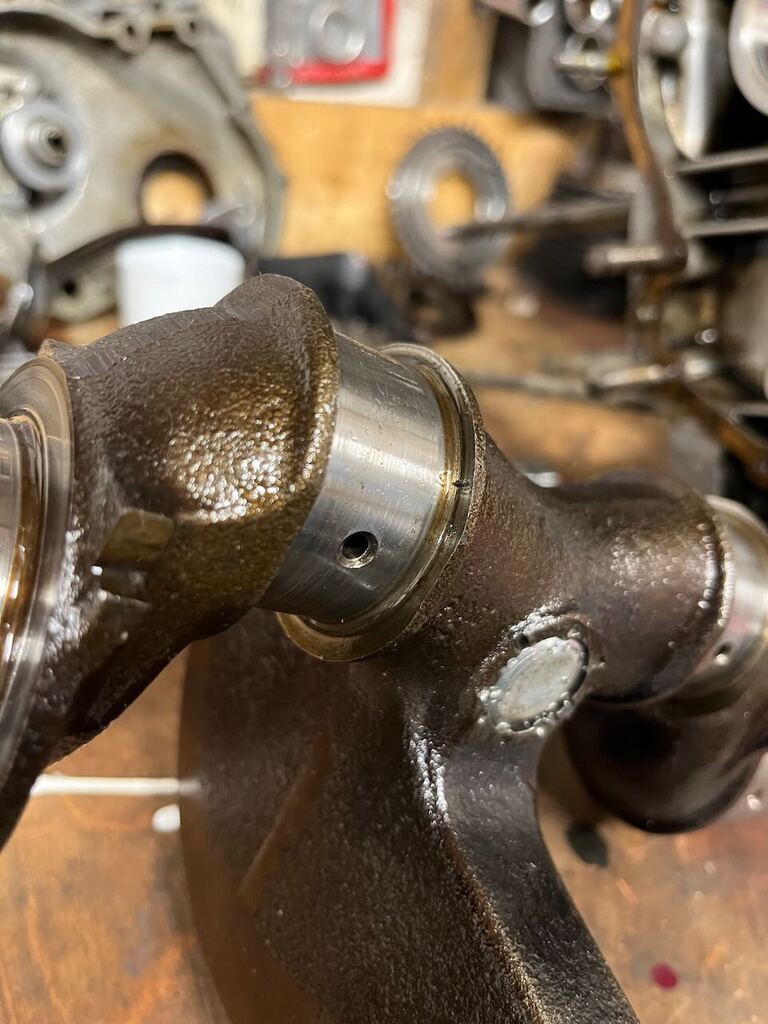
The from cam bearing is also heavily scored and the cam bearing surface in the crankcase has suffered too, the cam just runs in the aluminium case, so this damage would require proper machine shop time and modifying the case ot fit a bearing to save the crank case. Not good news.


The cam lobes look generally ok, theres some minor surface scratches visible on the cylinder 1 intake lifter but the other 3 look ok, and the rear cam bearing has some minor scoring, but like the rod journals, nothing too scary.
There's quite a lot of scoring on the surface where the oil pump pressure release rides against the cam, and more minor scoring on the internal surfaces of the oil pump.
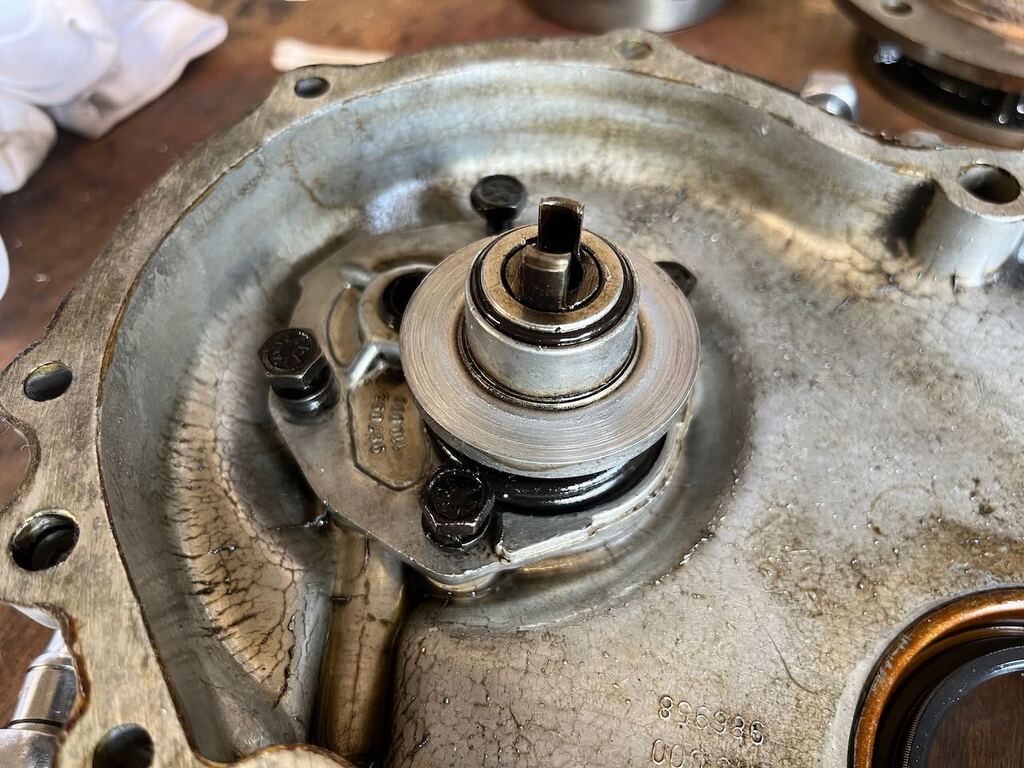
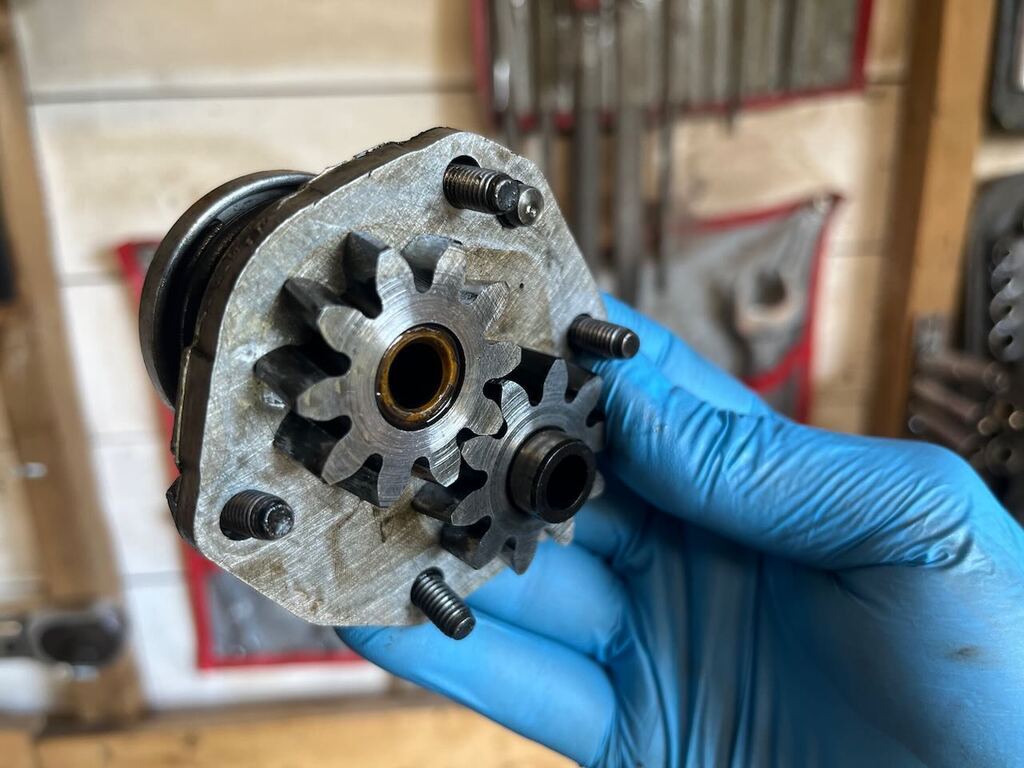
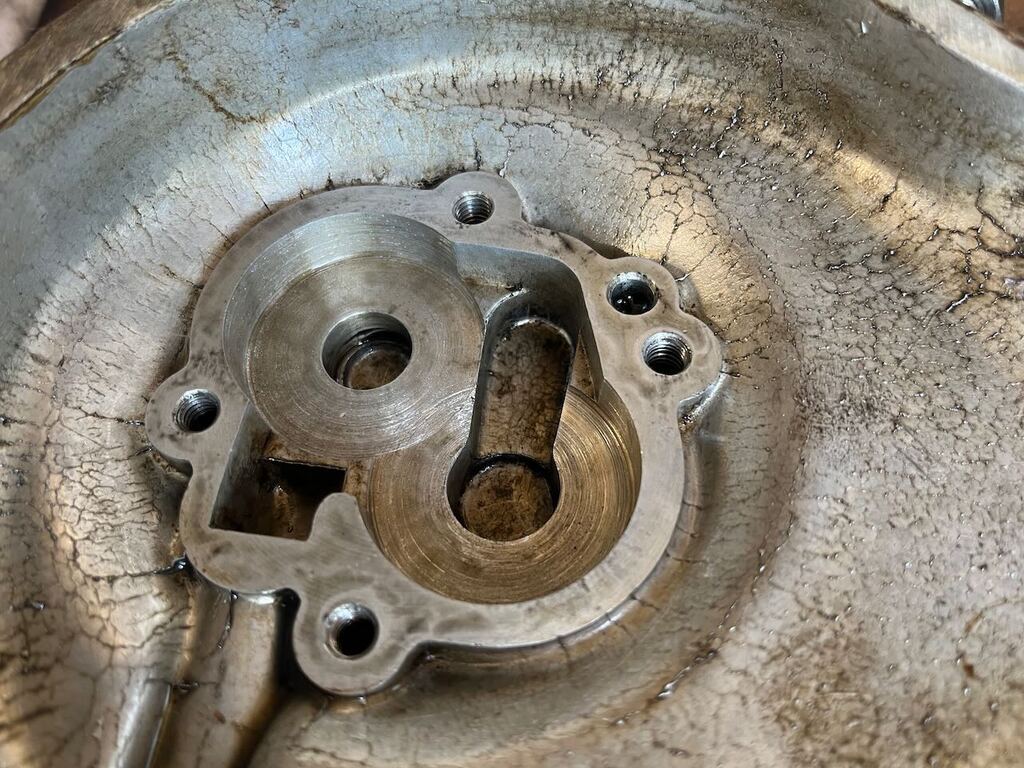
The good news is that the barrels, pistons and cylinder head all look fine.
A possibly interesting find was this damage to one of the oil gallery blanking plugs inside the bell housing.

I had to remove this plug when I helicoiled the oil pressure sensor mounting. I knew I hadn't got it quite as far back in the block as originally installed, the head of the soft aluminium plug was starting to round so I stopped, but I had no idea it wouldn't clear the flywheel. There was a metallic noise when I first started the engine, but it went away after a while and I had presumed (and tired to remedy) misalignment of the fan housing. In hindsight I think that noise was the flywheel rubbing this plug.
This raises an interesting failure scenario. This plug pushing agains the flywheel would be pulling the crank backwards with some reasonable force. The thrust is all controlled by the front main bearing and the thrust surface on the front of the bearing, which is loaded when the crank is pulled backwards, is quite small. Could this excessive and constant thrust force have caused premature wearing that thrust surface, which in turn created a metallic paste of bearing material which then spread across the front main bearing axial surface caused the wear, and then spreading in to the rest of the engine caused the other damage? It seems a likely reading of the failure to me.
Another potential failure is that some debris got inside the oil pump and from where was fed into the oiling system, with the front main bearing and front cam bearing thing the brunt of the damage as they are first to be fed oil from the pump? I did shot blast the front cover, and it did cross my mind the possibility of a stray grain or two of aluminium oxide being stuck inside the oil gallery in the front cover could do some serious damage. The case against this is that I did clean the cover very very thoroughly as I feared this possibility and also while I was able to find plenty of fine smooth metallic bearing paste in the centrifugal filter and sump, there was no sign of anything gritty. I appreciate it may have broken down, or even that a single grain which would be near impossible to find could be the catalyst for this chain of failure events?
My money is on the oil gallery plug being the root cause here. I feel silly for not noticing there was a problem when first assembling the engine. It seemed to turn over just fine, a little tight, but fresh rebuilds often are and I don't remember it becoming noticeably tighter once the flywheel was fitted.
So where to go forward from here, given the damage, I think the best move may be to fit the top half of my original engine, all of which appears unscathed (from what I've seen so far at least!) on to the bottom half of my spare engine. Now I remember that the spare engine wasn't as good as my original engine, the head was worse, the bores were already oversize and worn and it was burning a lot of oil, but I think the bottom end was ok?
I found the box of engine bits in my shed and had a look. The crank will be fine once It's had a light polish. Importantly the case looks ok. It's clearly done more miles than my original engine and there is some wear on the front cam bearing surface, but it looks more like wear and less like damage.

My heart dropped when I looked at the rear main bearing though.

Thats no good. Thankfully the rear main bearing from my original engine seemed to have got away with minimal damage, so will do for now.
So I think I cobble something together and be back on the road in a few weeks, with just the cost of an engine gasket set and a couple of litres of oil. The downside is I now have a mammoth cleaning task ahead of me! I will need to extra carefully clean all of the original engine parts that I will be using to make sure I'm rid of all the bearing material that's floating in the oil and the spare engine parts are still as I purchased them, resplendent in 60 years worth oil and dirt! I shall be sure to stay away from the shot blaster though... just incase!
With the tinware and other ancillaries removed from the engine, the first thing I noticed if that my pushrod tubes are looking nice and dry and haven't leaked any oil, but interestingly there is some leakage coming down from the head studs.

I wonder if the washer under the nut for the head studs be a special sealing washer? Or could I pop a bit of silicone under the washer when I reassemble the engine? Any other thoughts air cooled people?
Anyway, moving on, from here it was the work of just a few minutes to pop the engine on its side, pull the sump and get at the crank.

The front main bearing, as expect, is totalled. Lots of deep scratches on the main bearing surface, both the front and rear thrust surfaces, obvious play on the crank. Somehow I managed to not get a picture!
The front main bearing journal on the crank is also fairly scored, I'm sure it could be ground undersize as its not that deep, but can definitely feel it with my finger nail, so this crank wont be going back in an engine without work.

The rod journals have some light scoring, nothing like as bad as the front main journal, but not as clean as when I put the engine together.

The from cam bearing is also heavily scored and the cam bearing surface in the crankcase has suffered too, the cam just runs in the aluminium case, so this damage would require proper machine shop time and modifying the case ot fit a bearing to save the crank case. Not good news.


The cam lobes look generally ok, theres some minor surface scratches visible on the cylinder 1 intake lifter but the other 3 look ok, and the rear cam bearing has some minor scoring, but like the rod journals, nothing too scary.
There's quite a lot of scoring on the surface where the oil pump pressure release rides against the cam, and more minor scoring on the internal surfaces of the oil pump.



The good news is that the barrels, pistons and cylinder head all look fine.
A possibly interesting find was this damage to one of the oil gallery blanking plugs inside the bell housing.

I had to remove this plug when I helicoiled the oil pressure sensor mounting. I knew I hadn't got it quite as far back in the block as originally installed, the head of the soft aluminium plug was starting to round so I stopped, but I had no idea it wouldn't clear the flywheel. There was a metallic noise when I first started the engine, but it went away after a while and I had presumed (and tired to remedy) misalignment of the fan housing. In hindsight I think that noise was the flywheel rubbing this plug.
This raises an interesting failure scenario. This plug pushing agains the flywheel would be pulling the crank backwards with some reasonable force. The thrust is all controlled by the front main bearing and the thrust surface on the front of the bearing, which is loaded when the crank is pulled backwards, is quite small. Could this excessive and constant thrust force have caused premature wearing that thrust surface, which in turn created a metallic paste of bearing material which then spread across the front main bearing axial surface caused the wear, and then spreading in to the rest of the engine caused the other damage? It seems a likely reading of the failure to me.
Another potential failure is that some debris got inside the oil pump and from where was fed into the oiling system, with the front main bearing and front cam bearing thing the brunt of the damage as they are first to be fed oil from the pump? I did shot blast the front cover, and it did cross my mind the possibility of a stray grain or two of aluminium oxide being stuck inside the oil gallery in the front cover could do some serious damage. The case against this is that I did clean the cover very very thoroughly as I feared this possibility and also while I was able to find plenty of fine smooth metallic bearing paste in the centrifugal filter and sump, there was no sign of anything gritty. I appreciate it may have broken down, or even that a single grain which would be near impossible to find could be the catalyst for this chain of failure events?
My money is on the oil gallery plug being the root cause here. I feel silly for not noticing there was a problem when first assembling the engine. It seemed to turn over just fine, a little tight, but fresh rebuilds often are and I don't remember it becoming noticeably tighter once the flywheel was fitted.
So where to go forward from here, given the damage, I think the best move may be to fit the top half of my original engine, all of which appears unscathed (from what I've seen so far at least!) on to the bottom half of my spare engine. Now I remember that the spare engine wasn't as good as my original engine, the head was worse, the bores were already oversize and worn and it was burning a lot of oil, but I think the bottom end was ok?
I found the box of engine bits in my shed and had a look. The crank will be fine once It's had a light polish. Importantly the case looks ok. It's clearly done more miles than my original engine and there is some wear on the front cam bearing surface, but it looks more like wear and less like damage.

My heart dropped when I looked at the rear main bearing though.

Thats no good. Thankfully the rear main bearing from my original engine seemed to have got away with minimal damage, so will do for now.
So I think I cobble something together and be back on the road in a few weeks, with just the cost of an engine gasket set and a couple of litres of oil. The downside is I now have a mammoth cleaning task ahead of me! I will need to extra carefully clean all of the original engine parts that I will be using to make sure I'm rid of all the bearing material that's floating in the oil and the spare engine parts are still as I purchased them, resplendent in 60 years worth oil and dirt! I shall be sure to stay away from the shot blaster though... just incase!





 and letting them soak the lot in their cleaning bath overnight. Save a lot of elbow grease.
and letting them soak the lot in their cleaning bath overnight. Save a lot of elbow grease.





